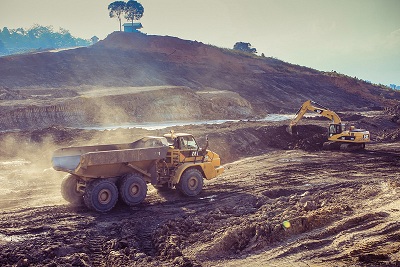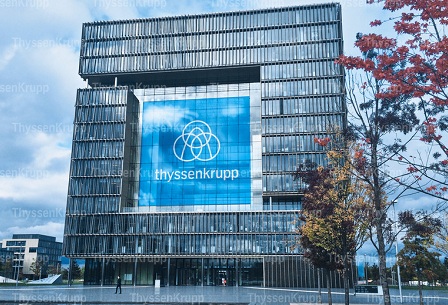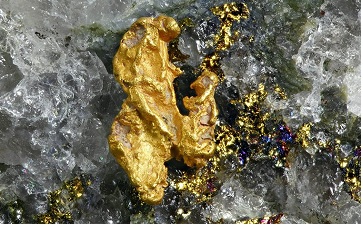The Bellekeno silver-lead-zinc deposit is an underground mine located within the Keno Hill Silver District in Canada’s Yukon territory. The deposit is a combination of 11 veins with different strikes, dips and thickness. The target vein for mining, vein 48, is divided into three segments, the Southwest, 99 and the East zones.
The deposit is owned by Alexco Resource. Construction of the mine and mill was completed in September 2010. Commercial production commenced in January 2011. The mine has an initial life of four years.
The 2010 exploration programme was completed in December 2010. It included 140m of underground development and 4,900m of diamond drilling.
Production
The mine produced 7,847t of concentrate in the first six months of commercial production. The ore comprised 5,059t of lead-silver and 2,788t of zinc concentrates.
Average mill throughput was 253 tonnes per day (tpd) in October 2011 with mill availability of 94%. The throughput will eventually be increased to between 350tpd and 400tpd.
Due to slow ramp-up in the third and fourth quarters of 2011, Alexco revised its production rates for 2011 calendar year, to approximately 2Moz of silver, 16Mlb of lead and 7Mlb of zinc. The original production was predicted to be between 2.2Moz and 2.5Moz of silver.
Reserves
The deposit contains 401,000t of indicated resources graded at 921g/t silver, 9.4% lead and 6.5% zinc. Inferred resources at the deposit have been estimated at 82,981t graded at 289g/t silver, 2.8% lead and 22.2% zinc.
To extend the resources, underground definition and exploration drilling programmes are in progress along with mine construction activities.
“The Bellekeno silver deposit is located within the Keno Hill Silver District in Canada’s Yukon territory.”
Geology
The deposit lies within the Keno Hill Silver district in the north-western block of the Selwyn Basin. The area is underlain by Upper Proterozoic to Mississippian rocks of the northern Cordilleran continental margin formation.
Three sedimentary rocks that were metamorphosed during the middle Cretaceous period to greenschist facies assemblages dominate the local geology of the deposit. The lower schist includes graphitic, calcareous and sericitic schists of the Devonian to Mississippian period, and quartzite and minor greenstone of the Middle Triassic era. The lower contact of this unit is intruded by the Tombstone Thrust fault.
The 700m-thick central quartzite of the Mississippian age includes quartzite with trace amounts of schist, phyllite and greenstone horizons. Cambrian-aged quartz-mica schist, quartzite, graphitic schist and minor limestone make up the upper schists. The upper schist is separated from the Central quartzite by the Robert Service thrust fault. Rock units, particularly in the lower and upper schists, are intruded by quartz-feldspar porphyritic sills.
The deposit is associated with four sets of faults. A Tombstone Thrust fault-related foliation parallel structure that dips southwards is the oldest fault within the deposit. There is a set of northeast to east-northeast steeply plunging faults with offset, that move sinistrally to an extent of 150m. The third fault set includes several transverse faults with a north-west strike and a steep north dip. These faults are mostly barren and filled with quartz with trace amounts of arsenopyrite, pyrite and jamesonite.
The faults occasionally represent dilatational zones between the en echelon system of longitudinal faults. The fourth set of faults include north-east striking cross faults that displace dextrally or sinistrally moving veins or longitudinal faults by nearly 2,000m.
Mineralisation
The deposit contains polymetallic silver, lead and zinc vein-type mineralisation. Silver, lead and zinc minerals are largely accumulated within well structured rocks including the Central quartzite. Gangue minerals within the deposit include trace amounts of calcite, manganiferous siderite and quartz. Silver is found within argentiferous galena and argentiferous tetrahedrite. Within the supergene assemblages, silver occurs as native in polybasite or in pyrargyrite and stephanite. Lead is hosted in galena while iron rich sphalerite hosts the zinc. Minor pyrite, chalcopyrite and arsenopyrite are the other sulphides found within the deposit.
Mining
The mining method adopted is mechanised long-hole stopping. Three stopes were brought into operation by the third quarter of 2010.
Processing
“The mill will annually produce 12,000t of lead and silver, and nearly 8,400t of zinc.”
Average mill throughput was 201tpd in the first quarter of 2011. Upon completion of the initial ramp-up phase, the throughput is expected to increase to more than the targeted 250tpd. The throughput will eventually be increased to between 350tpd and 400tpd.
The feed is delivered to a conventional flotation mill that has a capacity of 400t a day. The mill will annually produce 12,000t of lead and silver concentrate with an average grade of 6,200g/t Ag and 70% Pb. Nearly 8,400t of zinc concentrate with an average grade of 480g/t Ag and 55% Zn will also be produced.
Contractors
The contract for the engineering and procurement of the mill and plant was awarded to Wardrop Enginnering. A joint venture between Procon Mining and Tunnelling, and the Nacho Nyak Dun Development was awarded the mining services contract that will include the development and production activities.
The Gisborne Group was contracted for the erection of support steel members, mechanical installation and process piping.








